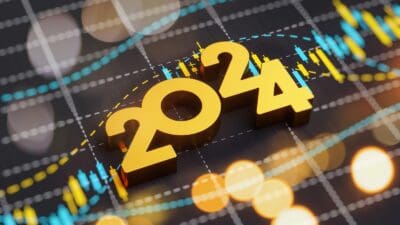FTSE 100 trackers provide exposure to an index that has returned 6% in total, on average, for the last five years. Because fees for these trackers are low, you get to keep a good slice of those returns.
Tracking the performance of the one hundred largest UK companies sounds like a stable and diversified bet on the UK economy. But before you invest remember that a tracker is only as good as the thing it tracks, and in the case of the FTSE 100, there may be a few things that surprise you.
Everything changes
You might not recognise the names of Eagle Star, Dalgety, or Scottish & Newcastle Breweries. They were members of the FTSE 100 when it was formed in 1984. One was acquired, the other two fell out of the index, but all three were gone within a year.
You probably will have heard the name Carillion. It left the FTSE 100 when it collapsed under the weight of its own debt and dodgy management. Of the original members of the FTSE 100, after 33 years about 28 had survived in recognisable form.
The FTSE 100 index changes. The market capitalisation of some companies will fall enough to mean they are removed and replaced with others. Some may go bust, others will be acquired. In another 33 years, the FTSE 100 will probably look very different.
Globalisation
Although the FTSE 100 is overwhelmingly composed of companies domiciled in the UK, buying a tracker does not mean you are investing in the UK economy.
According to the Schroders FactSet from March 2017, FTSE 100 companies derive about 70% revenue from the rest of the world, with big chunks coming from the US and China.
The performance of the FTSE 100, and anything that tracks it depends more on the fortunes of foreign economies than the domestic one. Movements in exchange rates will cause the revenues and profits reported by FTSE 100 companies to fluctuate, and thus affect the returns of the index.
Concentration
The FTSE 100 may not be as diversified as you imagine. Investing in a tracker of it means about 15% of your money goes in oil & gas stocks, 20% in financial companies, and just 0.6% in the shares of technology companies.
About a quarter of your money will back just five companies: 1 bank (HSBC), 2 oil & gas producers (Royal Dutch Shell and BP) and 2 pharmaceutical companies (GlaxoSmithKline and AstraZeneca).
Daring to be different
If you are looking for exposure to the UK economy, then tracking the FTSE 250 may be a better option. According to Schroders, companies in it get 55% of their revenue from the UK. It also offers less exposure to oil & gas, and a little more to the fast-growing technology sector.
With a total return of 8.5% on average over five years, it beats the FTSE 100 with the same volatility.
If you like the idea of investing in large UK companies, but don’t like the chop and change of the FTSE 100, I would consider buying companies like Unilever and GlaxoSmithKline. These are examples of big, diversified businesses that pay a dividend and have been there from the start.







